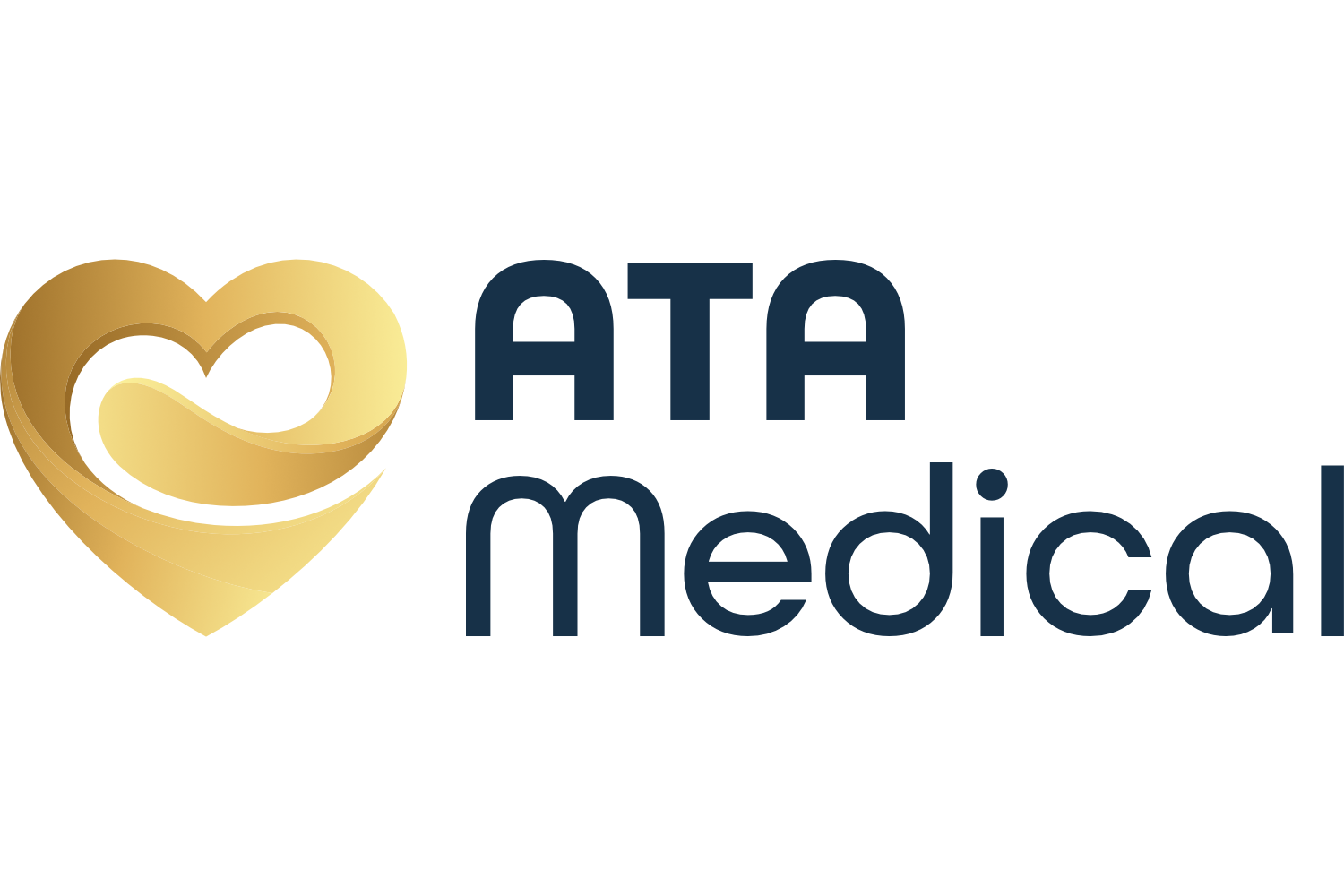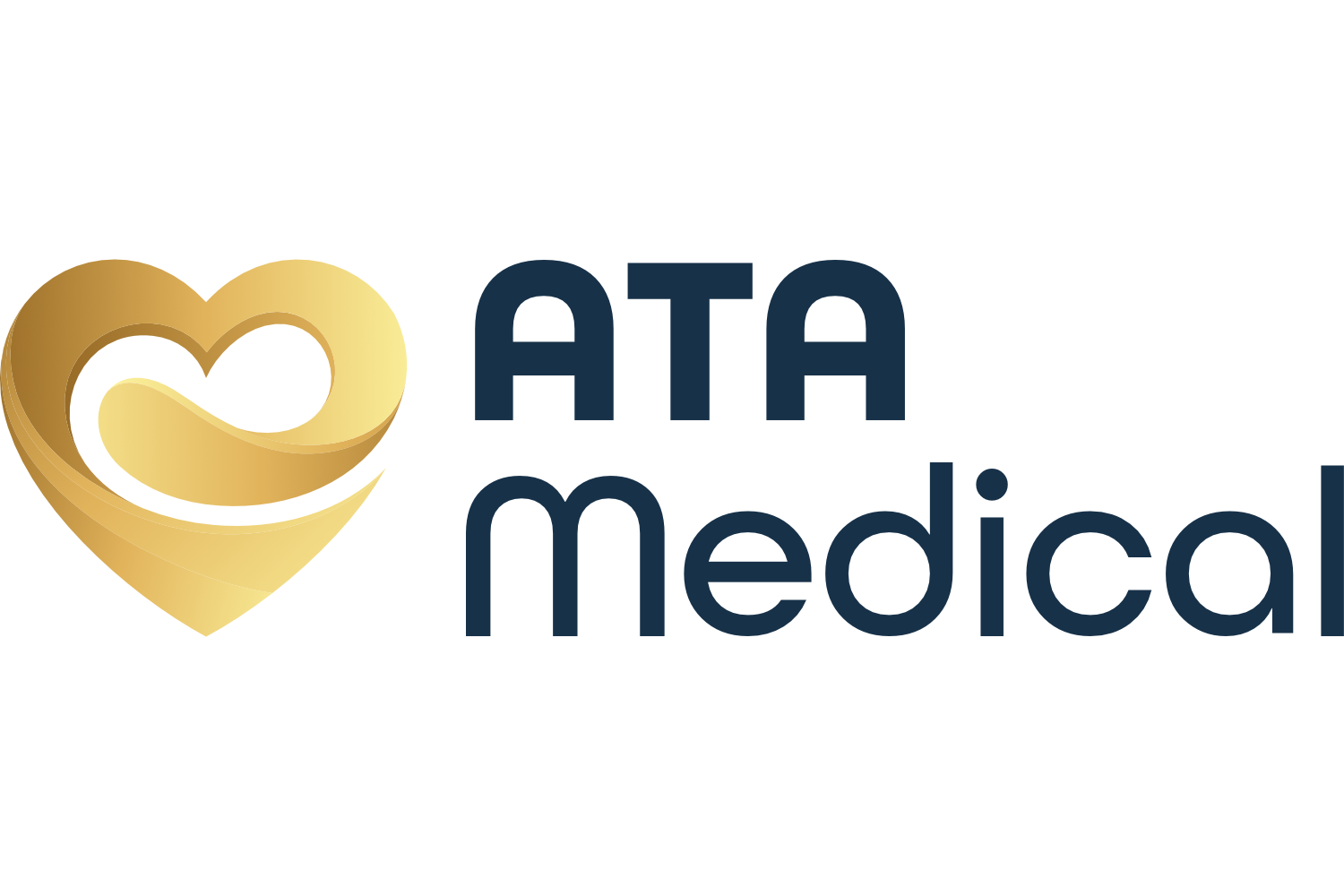Shingles Treatment Singapore
Last updated: Jun 30, 2025
Shingles, also known as herpes zoster, is a painful and uncomfortable condition that can be treated with various methods to help reduce symptoms and promote faster recovery. The main treatments include antiviral medications to decrease the virus's activity, pain relievers to alleviate discomfort, and topical remedies to calm the rash and blisters. These treatments are most effective when begun early in the course of the infection.

What Causes Shingles?
Shingles is caused by the varicella-zoster virus, the same virus responsible for chickenpox. After an individual recovers from chickenpox, the virus remains inactive, or dormant, within the body's nerve tissues. However, later in life, the virus can reactivate and cause shingles, especially when a person’s immune system is compromised or weakened. Key risk factors include:
- Age: People over the age of 50 are at higher risk, as immune function generally declines with age.
- Weakened Immune System: Cancer, HIV/AIDS, or long-term steroid use can reduce the body's ability to keep the virus suppressed.
- Stress: Psychological stress can place strain on the immune system, potentially triggering virus reactivation.
Shingles in Singapore
Here are some key statistics about shingles:
- Over 90 per cent of Singaporeans aged 50 and above carry the varicella-zoster virus, putting them at risk of developing shingles.
- There are an estimated 30,000 new cases of shingles locally each year.
- According to the Centres for Disease Control and Prevention (CDC), one in five persons with shingles will experience complications.
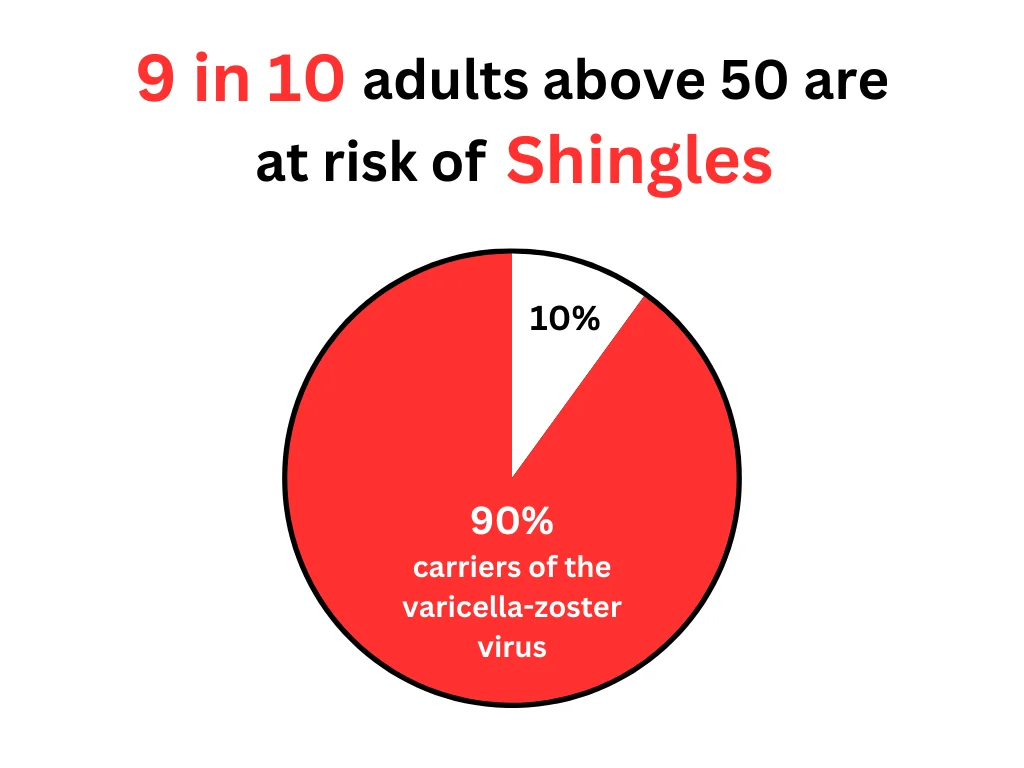
Shingles Symptom Singapore
Shingles usually develops through several stages, each characterized by different symptoms and durations. Typically, the active phase of shingles lasts from three to five weeks, though this may differ from person to person.
1. Initial Symptoms (Prodromal Phase)
The first signs of shingles often include non-specific symptoms such as fever, headache, fatigue, and sensitivity to light. Many people also experience pain, tingling, itching, or a sharp, burning sensation in a specific area, such as the lower back, where nerves are particularly sensitive.
2. Rash and Blisters (Rash Phase)
Within a few days after the initial symptoms, a red rash may develop, typically on one side of the body, often around the torso, face, or neck. This rash quickly forms fluid-filled blisters that are painful and sensitive to touch. This phase can last anywhere from one to 14 days.
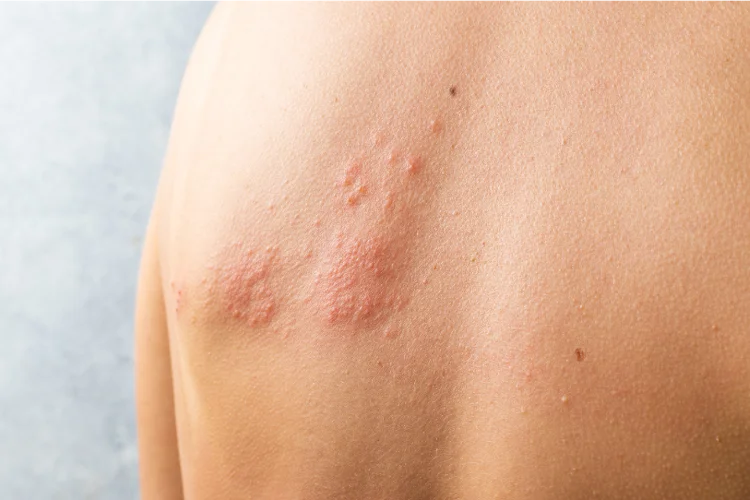
3. Healing and Scabbing (Healing Phase)
As the blisters burst, they scab over and gradually begin to heal, often accompanied by intense itching. This phase generally lasts another one to two weeks, though mild discomfort may persist even after the rash has cleared.
Shingles Complications
In severe cases, shingles can lead to postherpetic neuralgia (PHN), a chronic nerve pain condition that may persist for months or even years after visible symptoms have healed. Another serious complication is herpes zoster ophthalmicus (HZO), which occurs when a shingles rash develops on the face around the eyes and can lead to vision loss if untreated.
Shingles Treatment
Early diagnosis and intervention can significantly reduce pain, discomfort, and the risk of complications. Primary treatment options include:
- Antiviral Medications: Antiviral drugs like acyclovir, valacyclovir, and famciclovir can reduce the duration and severity of shingles, especially when started within 72 hours of rash onset.
- Pain Management: Over-the-counter pain relievers can help manage mild to moderate pain. For more severe cases, a doctor may prescribe more appropriate medications.
- Topical Treatments: Calamine lotion or cool compresses can help relieve itching and dry out blisters, reducing the risk of infection.
- Hydration and Rest: Staying well-hydrated and getting adequate rest are essential to support the immune system and promote faster recovery.
For postherpetic neuralgia (PHN), or lingering pain after shingles, nerve pain medications
may be recommended as additional treatment. However, vaccination remains the most effective way to prevent
the condition and to reduce its severity, duration, and the risk of complications
like PHN, particularly for adults over 50.
Disclaimer: This information is for educational purposes only and should
not be used as a substitute for professional medical advice. Always consult with a
doctor for diagnosis and treatment specific to your individual health needs.
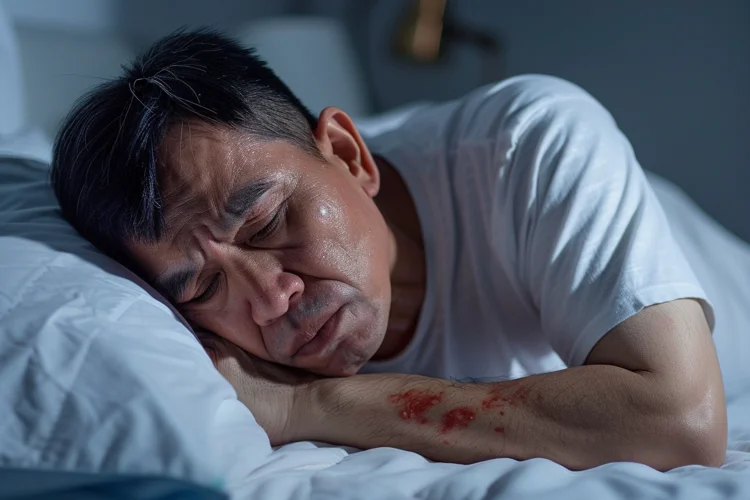
When to See a Doctor
If you suspect you have shingles or if you experience any of the following, seek medical attention promptly:
- Severe pain
- Rash near the eyes, which can affect vision if untreated
- Widespread rash beyond the typical one-sided pattern
- Persistent or worsening symptoms
Shingles Vaccine Subsidy in Singapore
From September 2025, eligible Singaporeans and PRs can receive subsidies of up to 75% for the Shingrix shingles vaccine at CHAS GP clinics, polyclinics, and MOH-funded care institutions. After subsidies, Singaporeans can expect to pay $75–$300, while PRs can expect to pay ~$450 per two-dose course. Pioneer and Merdeka Generation seniors get extra subsidies. From 2026, MediSave can be used to cover remaining costs.
Source: MOH
Cost of Shingles Treatment
At ATA Medical, we provide treatment and vaccination options for shingles with the following prices:
| Treatment | Price* |
|---|---|
| Consultation | From $49.05 |
|
Aciclovir (400 mg) Typical dosage: 800 mg taken 5 times daily for a duration of 7 days |
$0.76 per tab |
| Acyclovir 5% Cream (5 mg) | $10.90 |
| Shingles (Shingrix®) Vaccine | $375 / dose |
Where to Get Shingles Treatment in Singapore
ATA Medical is conveniently located at:
- Tanjong Pagar Medical Clinic (Closest MRT: Tanjong Pagar EW15)
- Orchard Clinic (Closest MRT: Orchard Boulevard TE13)
How Do I Book a Shingles Treatment Appointment?
ATA Medical @ Orchard
Nearest MRT: Orchard Boulevard Station (TE13)
Contact Number: 6223 0682
Email: camden@atamed.sg
Opening Hours:
Mon - Fri: 8:30 AM to 12:30 PM, 1:30 PM to 5:30 PM
Sat: 8:30 AM to 12:30 PM
Sun & PH: Closed
ATA Medical @ Tanjong Pagar
Nearest MRT: Tanjong Pagar Station (EW15)
Contact Number: 6223 0682
Email: hi@atamed.sg
Opening Hours:
Mon - Fri: 8:30 AM to 12:30 PM, 1:30 PM to 5:30 PM
Sat: 8:30 AM to 12:30 PM
Sun & PH: Closed
